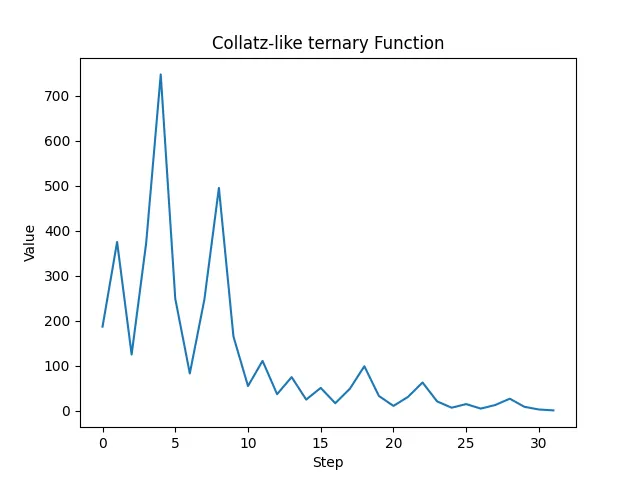How to Merge Classes using the Builder Design Pattern

Original image created with DALL·E
In earlier articles within this series (Merging Classes: an alternative path to the SOLIDness and Dynamic Decoration of Methods in Python), I presented the DynDesign package, as well as several methods for merging classes in Python and dynamically decorating methods with decorators that are loaded or created at runtime.
Motivation
After implementing in real-world scenarios the class merging techniques presented in the previous articles, I discovered areas for improvement in terms of adherence to the Single Responsibility Principle (SRP) and the Open-Closed Principle (OCP) of the SOLID principles: - The code implementing the class merging can be encapsulated into a class (specifically, a Class-Builder class), in order to adhere more closely to the SRP. - Additional options can be incorporated into the script and the corresponding optional classes can be merged without the need to modify the class builder , so as to fulfill the OCP.
Eliminating multiple calls to mergeclasses
Below is an excerpt from the latest version of the script for studying Collatz sequences (the complete code for all the examples of this article can be found here):
#collatz_statistics_deco_overloaded.py
import argparse
from dyndesign import mergeclasses, decoratewith
import matplotlib.pyplot as plt
class CollatzGraph:
...
class CollatzStatistics:
...
class CollatzSequence:
...
class CollatzCustom:
...
class CollatzOutput:
...
if __name__ == "__main__":
parser = argparse.ArgumentParser(description='Calculate Collatz sequence.')
parser.add_argument('n', help='an integer to calculate the Collatz sequence')
parser.add_argument('-c', action='store_true', dest='custom_collatz',
help='use custom Collatz instead')
parser.add_argument('-g', action='store_true', dest='collatz_graph')
parser.add_argument('-s', action='store_true', dest='collatz_statistics')
args = parser.parse_args()
CollatzMerged = mergeclasses(CollatzSequence, CollatzOutput)
if args.custom_collatz:
CollatzMerged = mergeclasses(CollatzMerged, CollatzCustom)
if args.collatz_graph:
CollatzMerged = mergeclasses(
CollatzMerged,
CollatzGraph,
invoke_all=['output_number']
)
if args.collatz_statistics:
CollatzMerged = mergeclasses(
CollatzMerged,
CollatzStatistics,
invoke_all=['output_number', 'output_wrapper']
)
collatz = CollatzMerged(args.n)
collatz.output_sequence()
Firstly, I want to ensure that **mergeclasses** is called only
once in order to follow the DRY principle and to optimize performance.
This change can be implemented because in this example the
invoke_all arguments passed in the last call (“[‘output_number’,
‘output_wrapper’]”) can be extended to all previous mergeclasses
calls without impacting the results. To implement this change, the
classes to merge are collected in a list and then merged together in a
single call to mergeclasses :
#collatz_mergeclasses_list.py
...
classes_to_merge = [CollatzSequence, CollatzOutput]
if args.custom_collatz:
classes_to_merge.append(CollatzCustom)
if args.collatz_graph:
classes_to_merge.append(CollatzGraph)
if args.collatz_statistics:
classes_to_merge.append(CollatzStatistics)
CollatzMerged = mergeclasses(
*classes_to_merge,
invoke_all=['output_number', 'output_wrapper']
)
collatz = CollatzMerged(args)
collatz.output_sequence()
It worth noting that, in this version of the script, the complete “arg” object is passed to initialize the “CollatzMerged” class instead of just “args.n”, in order to provide greater flexibility for future implementations.
Testing the new version results in:
$ python collatz_mergeclasses_list.py -cgs 187
Collatz-like ternary sequence starting from 187 is:
187; 375; 125; 373; 747; 249; 83; 247; 495; 165; 55; 111; 37; 75; 25; 51;
17; 49; 99; 33; 11; 31; 63; 21; 7; 15; 5; 13; 27; 9; 3; 1;
Max value reached: 747
Sequence length: 32

Dynamically importing the optional classes
If the scope of the SRP is broaden to include modules as well as classes, the next logical step becomes evident: moving each class to a separate module and dynamically importing it only if the corresponding options is set . This approach has also a positive impact on performance, particularly when dealing with a large number of optional classes that need to be imported.
Conveniently, mergeclasses can also accept path strings as
arguments, where the path string are path to the classes in dot
notation. Therefore, each class from the single-file script
“collatz_mergeclasses_list.py” can be moved to a corresponding module
with the class name in snake case and located in a directory named
“components”. As a result, the script is refactored into
“collatz_dynamically_imported.py” + multiple modules, each of which
containing a single class, so that the directory structure looks like:
...
collatz_dynamically_imported.py
components/
collatz_custom.py
collatz_graph.py
collatz_sequence.py
...
and the script is shortened to the following:
#collatz_dynamically_imported.py
import argparse
from dyndesign import mergeclasses
if __name__ == "__main__":
parser = argparse.ArgumentParser(description='Calculate Collatz sequence.')
parser.add_argument('n', help='an integer to calculate the Collatz sequence')
parser.add_argument('-c', action='store_true', dest='custom_collatz',
help='use custom Collatz instead')
parser.add_argument('-g', action='store_true', dest='collatz_graph')
parser.add_argument('-s', action='store_true', dest='collatz_statistics')
args = parser.parse_args()
classes_to_merge = [
"components.collatz_sequence.CollatzSequence",
"components.collatz_output.CollatzOutput"
]
if args.custom_collatz:
classes_to_merge.append("components.collatz_custom.CollatzCustom")
if args.collatz_graph:
classes_to_merge.append("components.collatz_graph.CollatzGraph")
if args.collatz_statistics:
classes_to_merge.append("components.collatz_statistics.CollatzStatistics")
CollatzMerged = mergeclasses(
*classes_to_merge,
invoke_all=['output_number', 'output_wrapper']
)
collatz = CollatzMerged(args)
collatz.output_sequence()
Employing a Class Builder for Merging Classes
The final steps in achieving SOLID principles involve automating the process of merging optional classes and organizing the related code within a Class Builder . By following this approach, the addition of a new script option typically involves simply placing the corresponding class in the “components” directory, thereby streamlining the development process.
To achieve this, the destination properties of the argparse options
are modified to correspond directly to the class names:
#collatz_building_merged.py
import argparse
from collatz_class_builder import CollatzClassBuilder
if __name__ == "__main__":
parser = argparse.ArgumentParser(description='Calculate Collatz sequence.')
parser.add_argument('n', help='an integer to calculate the Collatz sequence')
parser.add_argument('-c', action='store_true', dest='CollatzCustom')
parser.add_argument('-g', action='store_true', dest='CollatzGraph')
parser.add_argument('-s', action='store_true', dest='CollatzStatistics')
args = parser.parse_args()
class_builder = CollatzClassBuilder(args)
CollatzClass = class_builder.build_class()
collatz = CollatzClass(args)
collatz.output_sequence()
The Class Builder is implemented as follows:
#collatz_class_builder.py
from dyndesign import mergeclasses
import re
class CollatzClassBuilder:
COMPONENT_DIR = 'components'
def __init__(self, args):
self.args = args
@staticmethod
def camel_to_snake(value):
return re.sub('([a-z0-9])([A-Z])', r'\1_\2', value).lower()
def build_class(self):
classes_to_merge = ['CollatzSequence', 'CollatzOutput']
for opt_class, value in self.args.__dict__.items():
if opt_class != 'n' and value:
classes_to_merge.append(opt_class)
paths_to_merge = (
f"{self.COMPONENT_DIR}.{self.camel_to_snake(c)}.{c}"
for c in classes_to_merge
)
return mergeclasses(
*paths_to_merge,
invoke_all=['output_number', 'output_wrapper']
)
The method “build_class” in “CollatzClassBuilder” first adds the names of the base classes and the classes corresponding to the script options (i.e., all the valued script arguments except “n”) to the “classes_to_merge” list. Then, the class names in “classes_to_merge” are converted into dot-notated class paths by prepending the component directory and the package name, which is obtained by converting the class name from camel to snake case. Finally, the class resulting from merging all the class paths is returned.
Testing the adherence to the OCP
This section show how to introduce a new option, which would typically require modifying existing code, just by adding a new 6-line class. The new option provides the ability to analyze multiple Collatz sequences starting from the next M consecutive integers after the argument “n”, where M is an integer passed to the script from the option “-m”.
The challenge is to introduce this new feature without making
changes to the existing code , except for adding the argparse
setting for the “-m” option. Indeed, the new feature can be implemented
simply by adding the following file to the project:
#components/collatz_multiple.py
class CollatzMultiple:
def __init__(self, args):
self.m = args.CollatzMultiple
def output_wrapper(self, func):
for self.n in range(self.n, self.n + self.m + 1):
func(self)
and the following argparse setting to the main script:
parser.add_argument('-m', type=int, dest='CollatzMultiple')
The main magic behind this code lies in the dynamic decorator
“output_wrapper”, which, being passed in the invoke_all argument
list of mergeclasses , is applied in a nested chain together with
other decorator instances from different classes. The order of chaining
the decorator instances is important as it affects the final result, and
it is ultimately determined by the order of appearance of the
argparse settings. Here are some results obtained if the setting for
option “-m” is positioned before the ones for “-g” and “-s” in the
script’s code:
$ python collatz_building_merged.py -m5 20
Collatz sequence starting from 20 is:
20; 10; 5; 16; 8; 4; 2; 1;
Collatz sequence starting from 21 is:
21; 64; 32; 16; 8; 4; 2; 1;
Collatz sequence starting from 22 is:
22; 11; 34; 17; 52; 26; 13; 40; 20; 10; 5; 16; 8; 4; 2; 1;
Collatz sequence starting from 23 is:
23; 70; 35; 106; 53; 160; 80; 40; 20; 10; 5; 16; 8; 4; 2; 1;
Collatz sequence starting from 24 is:
24; 12; 6; 3; 10; 5; 16; 8; 4; 2; 1;
Collatz sequence starting from 25 is:
25; 76; 38; 19; 58; 29; 88; 44; 22; 11; 34; 17; 52; 26; 13; 40; 20; 10; 5;
16; 8; 4; 2; 1;
$ python collatz_building_merged.py -m5 -cs 20
Collatz-like ternary sequence starting from 20 is:
20; 58; 117; 39; 13; 27; 9; 3; 1;
Max value reached: 117
Sequence length: 9
Collatz-like ternary sequence starting from 21 is:
21; 7; 15; 5; 13; 27; 9; 3; 1;
Max value reached: 27
Sequence length: 9
Collatz-like ternary sequence starting from 22 is:
22; 45; 15; 5; 13; 27; 9; 3; 1;
Max value reached: 45
Sequence length: 9
Collatz-like ternary sequence starting from 23 is:
23; 67; 135; 45; 15; 5; 13; 27; 9; 3; 1;
Max value reached: 135
Sequence length: 11
Collatz-like ternary sequence starting from 24 is:
24; 8; 22; 45; 15; 5; 13; 27; 9; 3; 1;
Max value reached: 45
Sequence length: 11
Collatz-like ternary sequence starting from 25 is:
25; 51; 17; 49; 99; 33; 11; 31; 63; 21; 7; 15; 5; 13; 27; 9; 3; 1;
Max value reached: 99
Sequence length: 18
The script gives the expected results with any combination of options: if option “-g” is also set, then a graph is displayed after printing each sequence.
Final Thoughts
In this series of articles, I presented powerful techniques provided by package DynDesign for creating flexible and modular Python code that adheres to the SOLID and other principles. The initial idea of Merging Classes to provide developers with an easy-to-use developer tool has been implemented and enriched with additional tools to improve its usage, such as Dynamic Decoration and Dynamic Import from a Class Builder.
The outcome is an approach that complements established Design Patterns and enables the writing of code that aligns with widely employed design principles, such as the SRP and the OCP , and best practices.
Feel free to dive in and give DynDesign a shot, unlocking the boundless potential of Dynamic Design in your projects. Embrace this innovative approach and experience the transformative power it brings to your code organization.